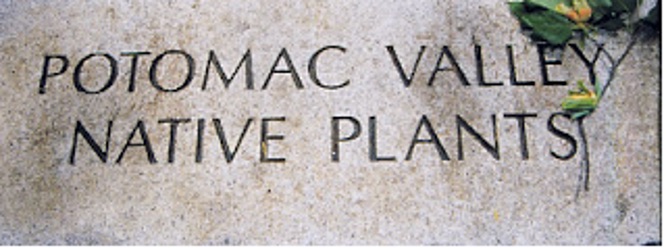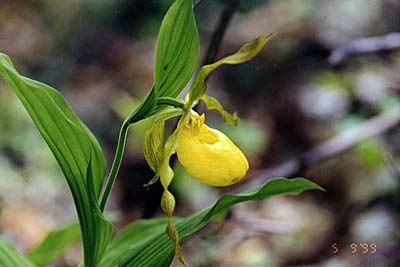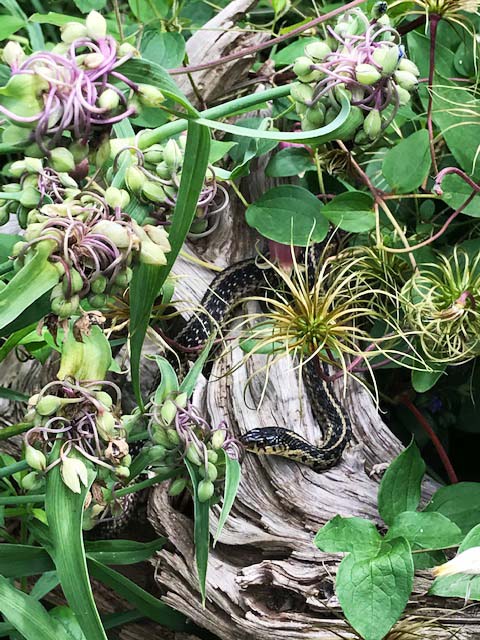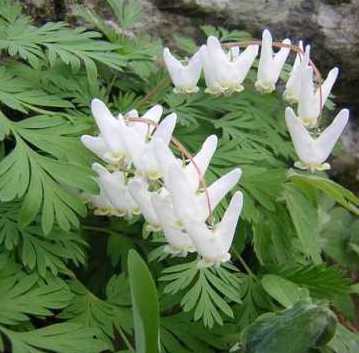In Our Backyard
The Potomac Valley Collection at Meadowlark
By Jennifer Naughton, Fairfax Master Gardener
 Spring is the stuff of poetry, stirring with the electricity of new life. Perhaps, this seasonal charge is all the more palpable when you are a gardener and live with one hand in the pulse of dirt and an eye fixed for the golden-green unfurling of leaf. Or perhaps, the thrill comes from growing up in a climate where spring may last a day or two as it did in my hometown of Buffalo, New York –a place renown for winters that refuse to end, where Easter bonnets are habitually worn with mittens and the plowed snow at the end of the driveway remains piled high and dirty until May.
Spring is the stuff of poetry, stirring with the electricity of new life. Perhaps, this seasonal charge is all the more palpable when you are a gardener and live with one hand in the pulse of dirt and an eye fixed for the golden-green unfurling of leaf. Or perhaps, the thrill comes from growing up in a climate where spring may last a day or two as it did in my hometown of Buffalo, New York –a place renown for winters that refuse to end, where Easter bonnets are habitually worn with mittens and the plowed snow at the end of the driveway remains piled high and dirty until May.
Most likely, the call to spring reaches beyond either explanation and is more elusive, more primal. It’s when the plant world beckons us outdoors with a siren’s cry — come see me, come join in this new life. The yellowing forsythia, crocus and ephemerals breaking ground, skunk cabbage littering the woodland floor and traces of pinkish red outlining new dimension to trees and setting them aglow — all provide a feast for the senses and lure us into its natural world.

Cypripedium parviflorum – Yellow Lady’s Slipper

Jeffersonia diphylla – Twinleaf
In one visit to the PVC, you can experience all four provinces and their flora in an hour. The northerly Appalachian Plateau, home to red spruce and hardwood forests, has an understory of Rhododendron calendulaceum as well as Arisaema triphyllum, Erythronium umbilicatum and Uvularia grandiflora, which light up the PVC forest with their fresh green, golden, red hues from February to May.

Clematis addisonii
In the broad Blue Ridge, limestone outcrops support many species in the open forest including Thalictrum coriaceum viewed on the southern side of the PVC trail, a rare plant with white-purple flowers from May to June. Near the woodland edge and beside a patch of phlox in bright sunshine, Taenidia integerrima blooms yellow in May and smells of celery when foliage is crushed. Host to both the black and Ozark swallowtail caterpillars, T. integerrima is not normally found in cultivation.

Dicentra cucullaria – Dutchman’s Breeches
The Potomac Valley Collection offers a view into the venerable woods, ridges, sun-dappled and sunlit valleys of mid-Atlantic America. The trail brimming with lush flora is animated with the call of the red shouldered hawk, the drumming of the pileated woodpecker and the chase and dance of blue birds. A visit to Meadowlark’s Potomac Valley opens a window to the wild and brings forth a desire for permanence in this ephemeral world.
References
• New plant conservation initiative at Meadowlark Botanical Gardens, U.S.A.: the Potomac Valley
Collection. Keith P. Tomlinson and M. Nancy Christmus. Botanic Gardens Conservation News, Vol. 3,
No. 7, December 2001
• Meadowlark Botanical Gardens, NOVA Parks
• Meadowlark Botanical Gardens, Sam Rosenberg Web Files, 2016
• Ecological Zones of the Southern Appalachians: First Approximation, US Department of Agriculture
• The Natural Communities of Virginia Classification of Ecological Groups and Community Types,
Virginia Department of Conservation and Recreation
• The Hot Zone: The Shale Barrens of Eastern West Virginia, West Virginia Department of Natural
Resources
• Overview of the Physiography and Vegetation of Virginia, Virginia Department of Conservation and
Recreation
• Meadowlark Botanical Gardens: A Garden Born of Politics and Environmentalism, Keith P.
Tomlinson, Botanical Gardens Conservation International
• Wildflowers and Plant Communities of the Southern Appalachian Mountains and Piedmont,
Timothy P. Spira